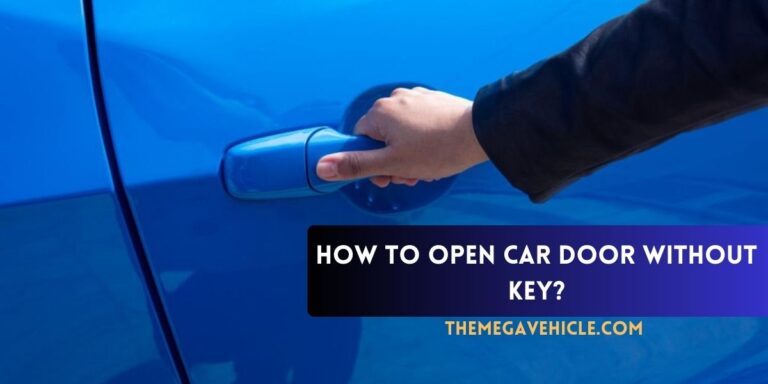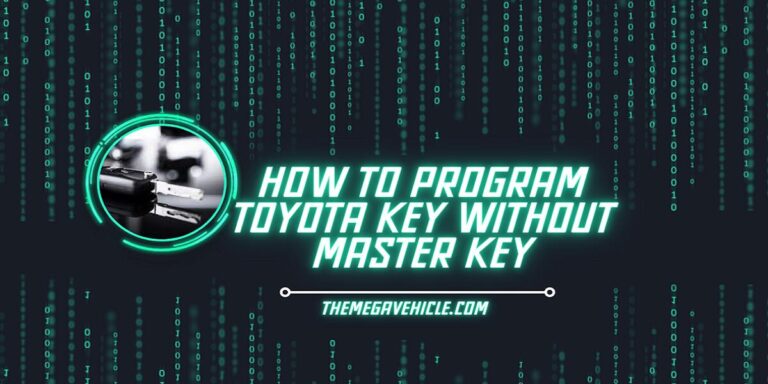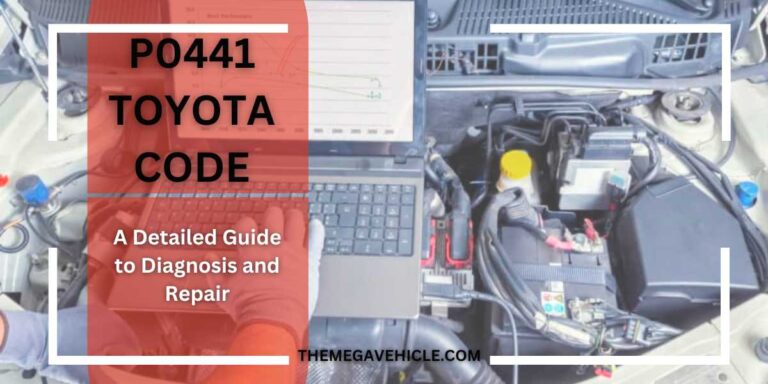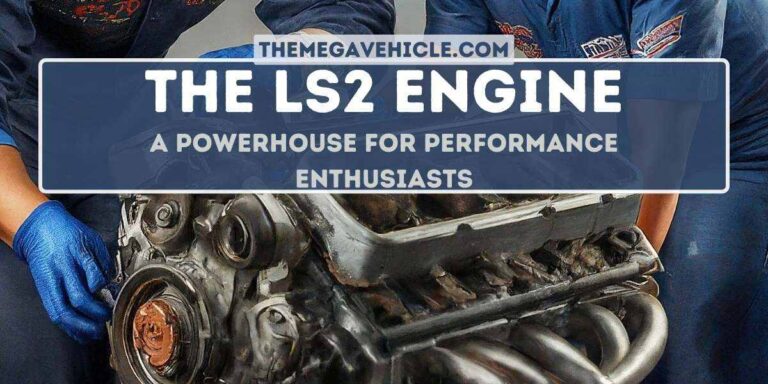How To Fix EPB Malfunction Toyota CHR?
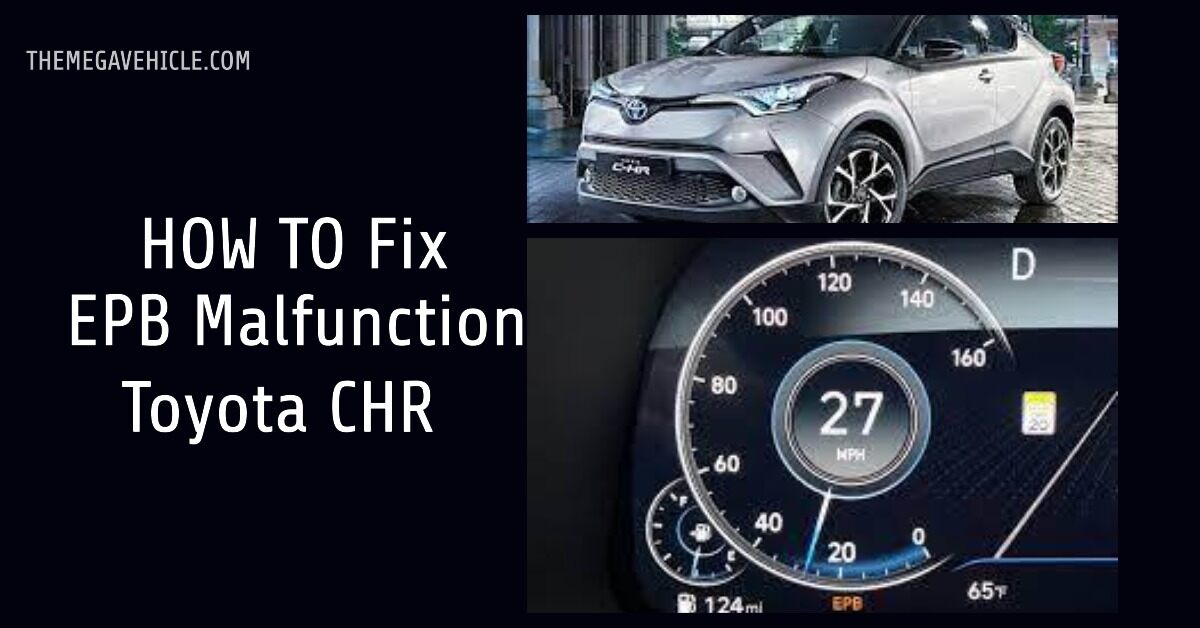
The Toyota C-HR, a popular SUV renowned for its sleek design and fuel efficiency, has been plagued by a recurring issue related to its Electronic Parking Brake (EPB) system. This malfunction can manifest in various ways, including the illumination of the EPB warning light, an inability to engage or disengage the parking brake, and a clicking noise emanating from the EPB actuator.
Symptoms of an EPB Malfunction
As a crucial safety feature in modern vehicles, the EPB system ensures the car remains stationary when parked. However, when the EPB malfunctions, it can pose significant safety concerns and hinder the vehicle’s operation. Here are some common symptoms of an EPB malfunction in the Toyota C-HR:
- EPB Warning Light Illumination: The EPB warning light, typically located on the instrument panel, will illuminate when the system detects an error. This light serves as an alert to the driver that there is an issue with the EPB system.
- Parking Brake Engagement or Disengagement Issues: If the EPB is unable to engage or disengage properly, it can prevent the car from being parked or driven. This can be particularly problematic when attempting to park on an incline or when trying to move the vehicle out of a parking spot.
- Clicking Noise from EPB Actuator: The EPB actuator is the component responsible for physically engaging and disengaging the parking brake. If the actuator is faulty, it may emit a clicking noise, indicating a mechanical problem.
- Car Won’t Start or Go into Reverse: In severe cases, an EPB malfunction can prevent the car from starting or going into reverse. This is because the EPB system is interlinked with the car’s starting and gear selection mechanisms.
Causes of an EPB Malfunction
Several factors can contribute to an EPB malfunction in the Toyota C-HR. These include:
- Faulty EPB Actuator: The EPB actuator is the most common cause of EPB malfunctions. Over time, the actuator motor can wear out or develop a fault, leading to problems with engaging or disengaging the parking brake.
- Damaged EPB Cables: The EPB cables connect the EPB control module to the EPB actuators. If these cables are damaged or corroded, they can disrupt the communication between the module and the actuators, leading to malfunctions.
- EPB Control Module Issues: The EPB control module is the brain of the EPB system, responsible for controlling the actuators and monitoring the system’s health. A faulty control module can cause a variety of EPB malfunctions.
- Software-Related Issues: In some cases, software glitches or outdated software can cause EPB malfunctions. Toyota may release software updates to address these issues.
Fixing an EPB Malfunction in Toyota C-HR
The Electronic Parking Brake (EPB) system is a crucial safety feature in modern vehicles, ensuring that the car remains stationary when parked. However, when the EPB malfunctions, it can pose significant safety concerns and hinder the vehicle’s operation.
1. Diagnosing the EPB Malfunction
Effective diagnosis of an EPB malfunction in the Toyota C-HR requires a combination of symptom analysis, diagnostic tools, and physical inspection of the EPB components. Follow these steps to accurately identify the source of the problem:
- Symptom Analysis: Begin by carefully observing the symptoms of the EPB malfunction. Note any illumination of the EPB warning light, issues with engaging or disengaging the parking brake, unusual noises, or limitations in vehicle operation.
- Scanning for Error Codes: Connect a compatible diagnostic scanner to the vehicle’s OBD-II port. This will allow you to retrieve any error codes stored in the EPB control module. These codes can provide valuable clues about the specific cause of the malfunction.
- Checking Brake Fluid Levels: Low brake fluid levels can contribute to EPB malfunctions. Check the brake fluid reservoir located near the master cylinder under the hood. Ensure the fluid level falls between the “MIN” and “MAX” marks.
- Inspecting Brake Pads and Rotors: Excessive wear on the brake pads or rotors can also affect the EPB system. Inspect the brake pads for thickness and wear indicators. Check the rotors for signs of warping or cracking.
- Physical Inspection of EPB Components: Visually inspect the EPB cables for damage or corrosion. Check the EPB actuators for signs of wear or mechanical damage. Look for any loose connections or debris around the EPB components.
- Consulting Technical Documentation: Refer to the Toyota C-HR’s technical documentation, including the owner’s manual and repair manuals, for detailed instructions on troubleshooting the EPB system. These resources will provide specific diagnostic procedures and repair guidelines.
2. Reset the Electronic Parking Brake System (EPB)
The Electronic Parking Brake (EPB) system, a standard feature in modern vehicles, enhances safety and convenience by automatically applying the parking brake when the vehicle is in Park (P) gear. However, like any system, the EPB can experience minor glitches or software-related issues that may lead to malfunctions. In some cases, a simple reset of the EPB system can resolve these issues, restoring its proper functioning.
Prerequisites for EPB Reset
Before attempting an EPB reset, ensure the following conditions are met:
- Vehicle Safety: Park the vehicle on a level surface and ensure the parking brake is disengaged. Engage Park (P) gear and chock the wheels to prevent movement.
- Battery Condition: Verify that the vehicle’s battery is in good condition and fully charged. A weak or depleted battery can disrupt the reset process or cause issues with the EPB system.
EPB Reset Procedure
Follow these steps to reset the EPB system:
- Turn on the Ignition: Turn on the ignition without starting the engine. The EPB warning light may illuminate.
- Access EPB Reset Mode: Follow the specific instructions provided in your Toyota C-HR’s owner’s manual to enter EPB reset mode. This may involve pressing a combination of buttons or using a diagnostic tool.
- Initiate EPB Reset: Once in EPB reset mode, follow the prompts on the display or instructions in the owner’s manual to initiate the reset process. This may involve confirming the reset or selecting the appropriate option from a menu.
- Monitor EPB Warning Light: Observe the EPB warning light during the reset process. If the light blinks or turns off, the reset has been successful.
- Exit EPB Reset Mode: Follow the instructions to exit EPB reset mode. Turn off the ignition and wait for a few minutes before starting the engine.
3. Cleaning Brake Components in a Toyota C-HR
Regular maintenance of your vehicle’s brakes is paramount for ensuring both optimal performance and safety on the road. This includes routinely checking and cleaning the brake components, such as the brake calipers, pads, rotors, and fluid. By following these simple yet crucial steps, you can prevent costly repairs and maintain your Toyota C-HR’s braking system in top condition.
Gathering the Necessary Tools and Materials
Before embarking on the brake inspection and cleaning process, ensure you have the following tools and materials readily available:
- Jack and jack stands
- Lug wrench
- Socket wrench set
- Wire brush
- Brake cleaner
- Brake pad wear indicator gauge
- Brake caliper lubricant
- Torque wrench
Inspecting and Cleaning the Front Brakes
- Secure the Vehicle: Park your Toyota C-HR on a level surface and engage the parking brake. Loosen the lug nuts on the front wheels using a lug wrench.
- Raise the Vehicle: Using a jack, carefully raise the front of the vehicle and support it securely with jack stands.
- Remove the Front Wheels: Completely remove the lug nuts and gently pull the front wheels off the hub assemblies.
- Inspect the Brake Pads: Visually examine the brake pads for signs of excessive wear, uneven wear, or damage. Utilize a brake pad wear indicator gauge to measure the remaining pad thickness. If the pads are worn down to the wear indicator or exhibit any signs of damage, replacement is necessary.
- Clean the Brake Calipers: Employ a wire brush to remove any debris or dirt accumulated on the brake calipers. Apply brake cleaner to a clean rag and thoroughly wipe down the calipers, ensuring no brake cleaner comes into contact with the brake pads or rotors.
- Inspect the Brake Rotors: Visually inspect the brake rotors for any signs of warping, cracking, or excessive wear. If the rotors are warped or cracked, replacement is mandatory. If the rotors show excessive wear, resurfacing or replacement may be required.
- Lubricate Moving Parts: Apply a small amount of brake caliper lubricant to the contact points between the brake pads and caliper guides. This will help reduce friction and ensure smooth operation of the brakes.
- Reinstall the Front Wheels: Carefully align the front wheels with the hub assemblies and reinstall the lug nuts. Using a torque wrench, tighten the lug nuts to the specified torque.
- Lower the Vehicle: Slowly lower the vehicle using the jack and remove the jack stands.
Repeating the Process for the Rear Brakes
Follow the same procedure outlined for the front brakes to inspect and clean the rear brake components.
Additional Tips for Optimal Brake Maintenance
- Regularly check the brake fluid level and top it off if necessary. Use the recommended brake fluid specified in your vehicle’s owner’s manual.
- Schedule brake inspections by a qualified mechanic at least once a year or more frequently if you drive in harsh conditions.
- Exercise caution when working with brake components, as they may contain hazardous materials. Always wear gloves and safety glasses to protect yourself.
By diligently following these steps and maintaining your Toyota C-HR’s brakes regularly, you can ensure optimal braking performance, enhanced safety, and peace of mind on every journey.
4. EPB Calibration in Toyota C-HR
The Electronic Parking Brake (EPB) system, a hallmark of modern vehicles, offers enhanced safety and convenience by automatically applying the parking brake when the vehicle is in Park (P) gear. However, to ensure optimal performance and precise parking, the EPB system may require calibration from time to time. This is particularly important after replacing the brake pads, rotors, or EPB actuators.
Prerequisites for EPB Calibration
Before embarking on the EPB calibration process, ensure the following conditions are met:
- Vehicle Safety: Park the vehicle on a level surface with the parking brake disengaged. Engage Park (P) gear and securely chock the wheels to prevent movement.
- Battery Condition: Verify that the vehicle’s battery is in good condition and fully charged. A weak or depleted battery may disrupt the calibration process or cause issues with the EPB system.
- Tools and Software: Access to a compatible EPB calibration tool or software specifically designed for the Toyota C-HR is essential. This tool or software will enable communication with the EPB control module and guide you through the calibration procedure.
EPB Calibration Procedure
- Establish Connection: Connect the EPB calibration tool or software to the vehicle’s OBD-II port using a compatible cable.
- Identify Vehicle Model: Select the Toyota C-HR model year from the available options in the calibration tool or software.
- Enter Calibration Mode: Follow the specific instructions provided by the calibration tool or software to access EPB calibration mode. This may involve entering a security code or selecting the appropriate option from a menu.
- Initiate Calibration: Once in calibration mode, follow the prompts on the calibration tool or software to initiate the EPB calibration process. Confirm the calibration and select the appropriate option from the menu.
- Monitor Progress: The calibration tool or software will display the progress of the calibration process. Allow several minutes for the calibration to complete successfully.
- Verify Calibration Completion: Upon successful calibration, the tool or software will display a confirmation message. Additionally, the EPB warning light may turn off or blink to indicate successful calibration.
- Exit Calibration Mode: Follow the instructions to exit EPB calibration mode. Disconnect the calibration tool or software from the vehicle’s OBD-II port.
By following these steps and regularly calibrating the EPB system, you can ensure optimal performance, precise parking, and enhanced safety for your Toyota C-HR.
When to Seek Professional Help for Toyota C-HR EPB Malfunctions
While some EPB malfunctions can be addressed through DIY troubleshooting, certain situations demand professional assistance. Here are instances when seeking expert help is crucial:
- Persistent Malfunctions: If EPB malfunctions persist despite DIY attempts, it’s important to seek professional intervention to prevent further complications.
- Unusual Noises: Persistent clicking or grinding noises from the EPB actuators suggest mechanical damage or wear, which requires professional evaluation and repair.
- Brake Pad and Rotor Replacement: Excessive wear on brake pads or rotors can affect the EPB system. If inspection reveals worn brake pads or rotors, they should be replaced by qualified mechanics using Toyota-approved parts.
- EPB Actuator Repair or Replacement: If the EPB actuators are faulty, they may need to be repaired or replaced. This should be done by qualified mechanics with specialized tools and expertise.
- EPB Control Module Repair or Replacement: In rare cases, the EPB control module may be the culprit behind the malfunction. This module is responsible for controlling the EPB actuators and monitoring the system’s health. If the control module is faulty, it may need to be repaired or replaced by authorized Toyota technicians.
- Complex Problems: If the EPB malfunction involves intricate components or specialized tools, seeking professional help ensures accurate diagnosis and effective repair.
Professional Assistance Options for EPB Malfunctions
When seeking professional help for EPB malfunctions, consider these options:
- Authorized Toyota Dealer: Authorized Toyota dealers possess the latest technical information, specialized tools, and trained technicians to accurately diagnose and repair EPB issues. They have access to Toyota-approved parts and follow manufacturer-recommended repair procedures.
- Qualified Toyota Mechanic: If an authorized Toyota dealer is not readily available, a qualified Toyota mechanic with experience in EPB systems can provide expert diagnosis and repair services. Ensure they have the necessary expertise and experience to handle EPB issues effectively.
- Toyota Customer Service: Toyota’s customer service representatives can provide guidance and support regarding EPB malfunctions. They can direct you to the appropriate resources or connect you with authorized repair centers.
While DIY troubleshooting can address minor EPB issues, seeking professional help is paramount when encountering persistent malfunctions, unusual noises, or complex problems that require specialized expertise or tools. Authorized Toyota dealers and qualified Toyota mechanics can provide accurate diagnosis, effective repairs, and ensure the safety and reliability of your Toyota C-HR’s EPB system.
Preventive Measures to Avoid EPB Malfunctions in Toyota C-HR
The Toyota C-HR’s Electronic Parking Brake (EPB) system plays a crucial role in ensuring vehicle stability and safety when parked. However, like any mechanical system, the EPB can experience malfunctions that can compromise the vehicle’s operation and pose safety hazards. By implementing proactive measures, you can significantly reduce the risk of EPB malfunctions and maintain your Toyota C-HR in top condition. Here’s a comprehensive guide to preventive measures:
- Avoid Using EPB as Primary Parking Brake: While the EPB offers convenience, refrain from using it as your primary parking brake. Regularly use the mechanical parking brake lever for everyday parking. This distributes the parking force more evenly, reducing stress on the EPB system and minimizing the risk of premature wear or damage.
- Adhere to Recommended Maintenance Schedule: Follow the recommended maintenance schedule and have your vehicle serviced regularly at an authorized Toyota dealer or a qualified mechanic. This includes checking the EPB system for any signs of wear or damage, ensuring optimal performance and longevity. Regular maintenance allows for early detection of potential issues, preventing more severe problems and costly repairs down the road.
- Stay Updated with Software Updates: Check for available software updates for your Toyota C-HR. Software updates may address known EPB-related issues and improve the overall performance of the EPB system. Installing software updates promptly ensures that your EPB system is functioning at its best and minimizes the risk of malfunctions.
- Maintain Clean EPB Cables and Actuators: Keep the EPB cables and actuators clean and free of debris. Dirt and corrosion can interfere with the system’s proper operation and increase the risk of malfunctions. Regular cleaning of these components ensures smooth operation and reduces the likelihood of disruptions.
- Prompt Repair for Warning Signs: If you notice any signs of an EPB malfunction, such as the warning light illuminating or unusual noises, address the issue promptly. Early detection and repair can prevent more severe problems and costly repairs. Ignoring warning signs can lead to more extensive damage and compromise the safety of the vehicle.
- Avoid Extreme Parking Conditions: Avoid parking in extreme conditions, such as excessively hot or cold environments, as these can affect the EPB system’s sensors and actuators. Extreme temperatures can disrupt the sensors’ ability to accurately detect the parking position and may interfere with the actuators’ function.
- Practice Gentle Parking Habits: Avoid sudden or aggressive parking maneuvers. Harsh parking can put excessive strain on the EPB system and increase the risk of wear or damage. Gentle parking habits promote smoother operation and reduce the likelihood of premature wear or malfunctions.
- Regular Brake Inspection: Have your brakes inspected by a qualified mechanic at least once a year or more frequently if you drive in harsh conditions. This includes checking the brake pads, rotors, and brake fluid level, as these components can influence the EPB system’s performance. Regular brake inspections ensure that all components are functioning properly and contributing to the optimal operation of the EPB system.
- Proper Brake Pad Replacement: When replacing brake pads, ensure that you use high-quality parts compatible with your Toyota C-HR’s EPB system. Improperly installed or incompatible brake pads can cause malfunctions and affect the EPB’s operation. Using high-quality, compatible parts ensures proper compatibility with the EPB system and minimizes the risk of disruptions.
- Seek Professional Assistance for Complex Repairs: Unless you have the necessary expertise and specialized tools, refrain from attempting DIY repairs on the EPB system. Improper repairs can worsen the problem and compromise the safety of the vehicle. For complex repairs or troubleshooting, seek professional assistance from an authorized Toyota dealer or a qualified mechanic. Their expertise and specialized tools ensure accurate diagnosis and effective repairs, restoring the EPB system to optimal performance.
By following these preventive measures and maintaining your Toyota C-HR’s EPB system, you can significantly reduce the risk of malfunctions and enjoy a safer, more reliable driving experience. Remember, regular maintenance, prompt attention to warning signs, and seeking professional assistance when needed are key to maintaining the integrity of your vehicle’s EPB system.

